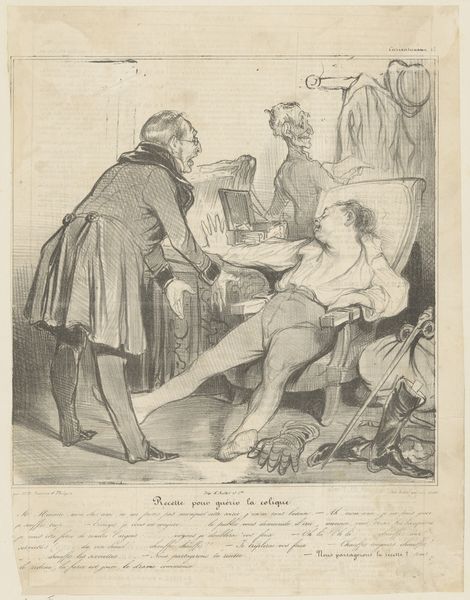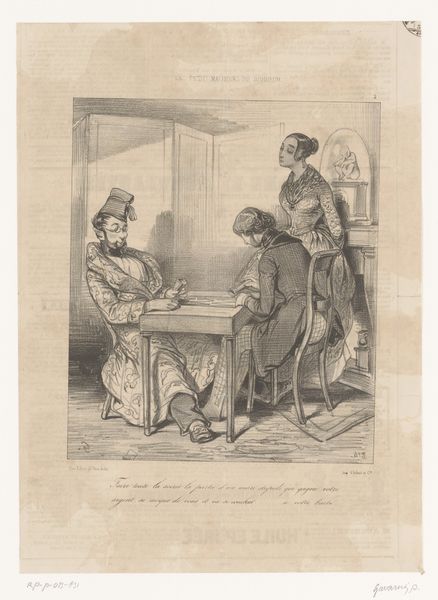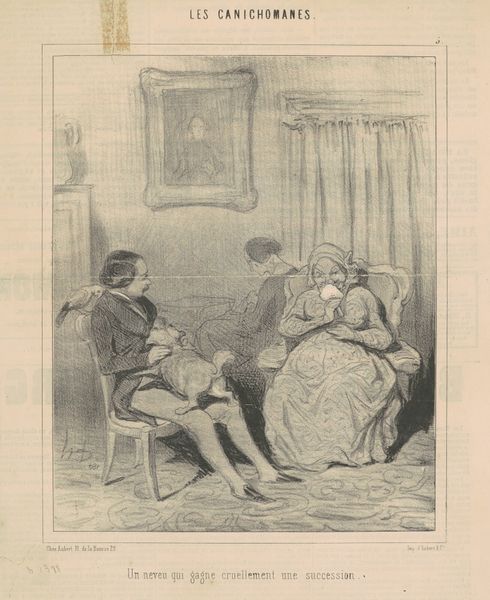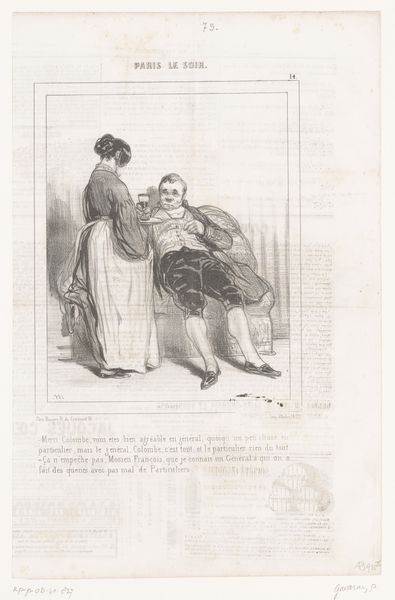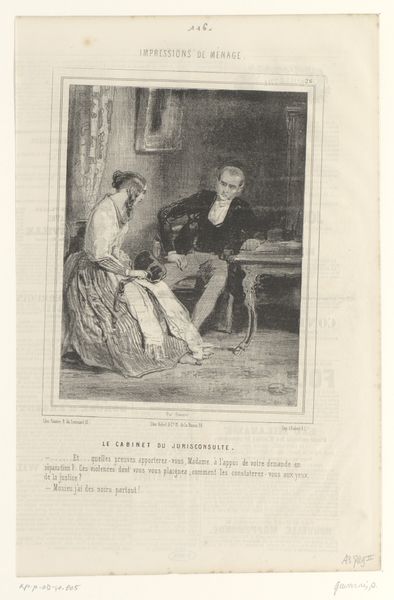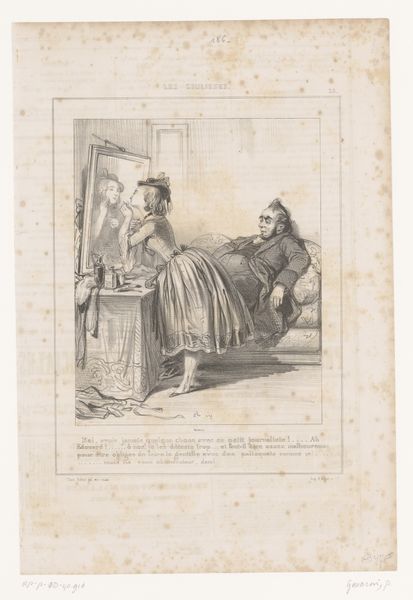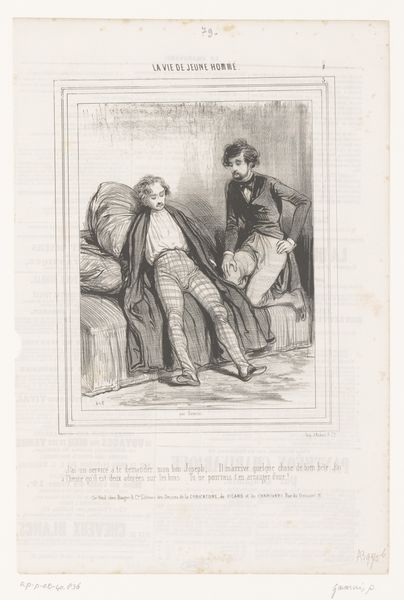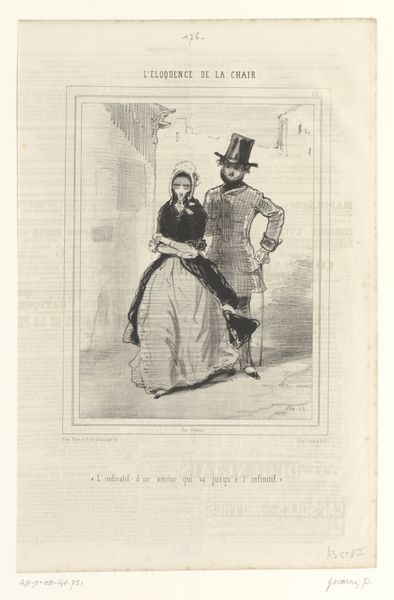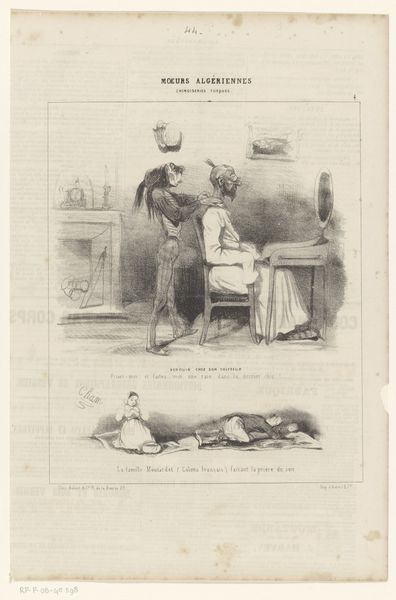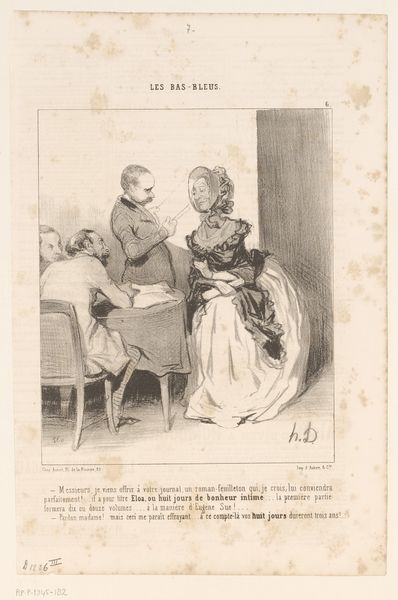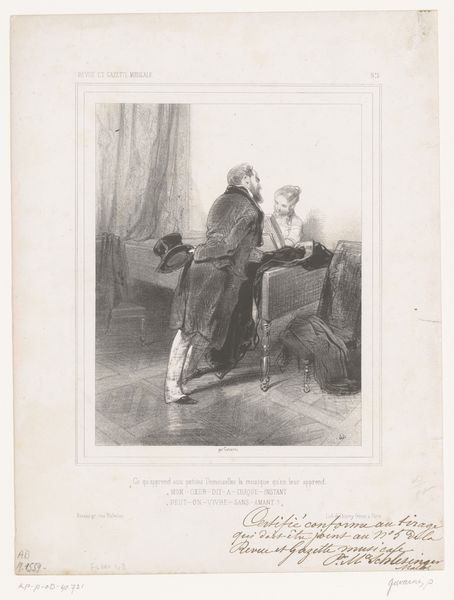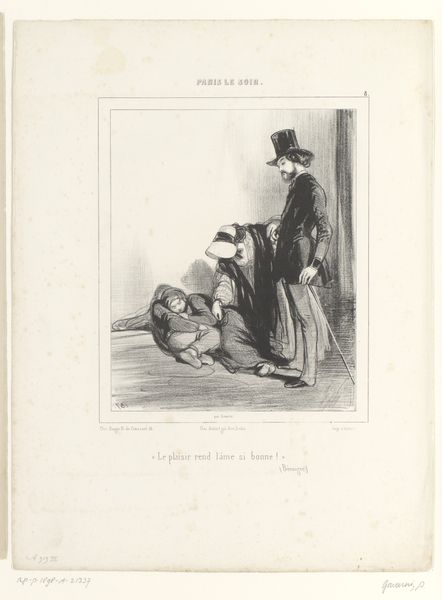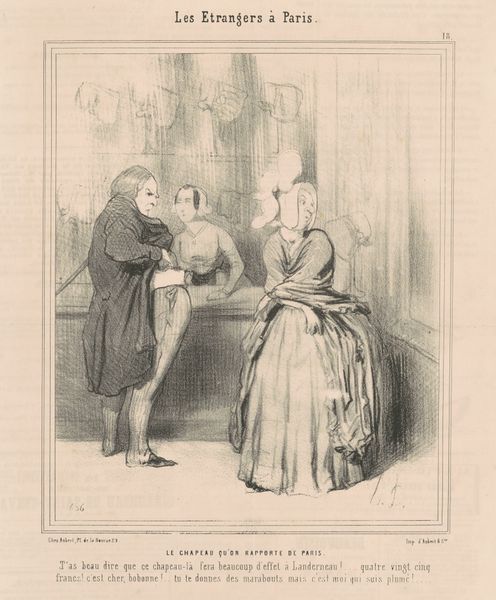
lithograph, print
#
portrait
#
lithograph
# print
#
caricature
#
19th century
#
genre-painting
Dimensions: height 363 mm, width 243 mm
Copyright: Rijks Museum: Open Domain
Curator: Oh, look at this scene! It's Honore Daumier's lithograph, "Caricature of Two Parents with a Baby," made in 1844. It feels so incredibly modern, somehow. Editor: It’s a potent little tableau. She looks absolutely exhausted, overwhelmed even, slouched over her work like a wilted flower, while he's looming with a baby—a monument to her disruption! It strikes a deeply ironic, though probably unintentional chord about gender roles. Curator: Well, Daumier was a master of social commentary, using satire to critique 19th-century French society. This print likely targets bourgeois family life, specifically intellectual women, and maybe the challenges they face trying to balance motherhood and professional aspirations. "Les Bas-Bleus" means blue stockings or bluestockings: a historically unflattering epithet given to intellectual women, implying pretension. Editor: I sense it's definitely meant to be poking fun at her situation. Look at his posture! Proud, clueless—burdening her rather than nurturing. And the chaos around her desk... That overflowing wastebasket and the messy piles of books! All contribute to an immediate feel for this woman's dilemma, stuck between work, intellectual pursuit, and societal expectation for domesticity and being primary caretaker. Curator: Exactly! Lithography was ideal for mass production, allowing Daumier to widely distribute his social critiques through newspapers and journals. He’s using caricature here, exaggerating features to emphasize certain traits and create a humorous effect. Notice how his head is bulbous and face ruddy? Contrast that to her hunched, drawn-out affect, darkened under-eye circles and the slumped back. There’s such depth. Editor: Absolutely, the scale of the print, so intimate and personal, lends it such immediate strength. I am drawn to her instantly, and immediately want her to escape the circumstances so obviously oppressive. You get this feeling that one part of the "joke" relies upon the fact that you probably SHOULDN'T find humor here; that the inequality so plain should evoke the appropriate level of sympathy. Curator: Right! And it probably did for many! By portraying this specific, albeit satirized, scene, he reflects anxieties surrounding evolving gender roles. This tension between the idealized role of the mother and her independent intellectual life is very charged. Editor: A little like looking into a darkly comedic mirror of the era. So few things have actually changed! Curator: Yes, a reflection that still throws back quite a light on who we were—and perhaps, in some ways, who we continue to be.
Comments
No comments
Be the first to comment and join the conversation on the ultimate creative platform.
